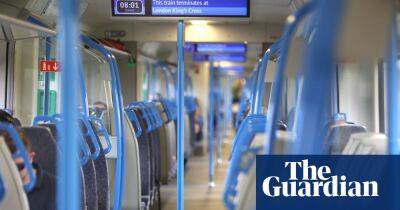The Guardian view on the future of rail: managed decline is no way forward
At some point this summer, a popular vote will help determine the location of the future headquarters of Great British Railways (GBR). Unveiled with boosterish enthusiasm last year by the transport secretary, Grant Shapps, this new public body will supersede Network Rail, overseeing both services and infrastructure. Wherever GBR is eventually based – candidate hosts include historic train towns such as Crewe and Darlington – it will have its work cut out.
Last week’s overwhelming vote in favour of industrial action by members of the National Union of Rail, Maritime and Transport Workers (RMT) has been predictably portrayed as a return to 1970s-style union militancy. Against a backdrop of soaring inflation and public sector pay caps, a potential confrontation between organised labour and the government does have a certain retro quality. But the Life on Mars alarmism is overdone and misses the deeper issues at stake. The RMT’s demands for better pay and job security should be seen in the context of an industry whose future is suddenly and disturbingly uncertain.
Total passenger numbers on trains have now returned to about 80% of pre-Covid levels. But the figures are significantly lower on profitable commuter routes – particularly those into London. White-collar workers have embraced hybrid and remote working as the new normal, and the rail industry faces an annual £2bn shortfall in revenue. While the population stayed at home during the pandemic, the government spent an extra £15bn to keep the network running. But as it turns the financial taps off and demands deep spending cuts, the government is in effect ordering the rail industry to cut its cloth according to these changed circumstances.
Understandably, given the high
Read more on theguardian.com


![Lido Finance [LDO]: Assessing what went wrong with this token in the last seven days - ambcrypto.com - city Santimentalthough](https://finance-news.co/storage/thumbs_400/img/2022/6/27/31273_3eejp.jpg)



![As Bitcoin [BTC] moves above $20,000, has the king token decided to make a slow recovery this time around? - ambcrypto.com](https://finance-news.co/storage/thumbs_400/img/2022/6/26/31269_tbu.jpg)
















